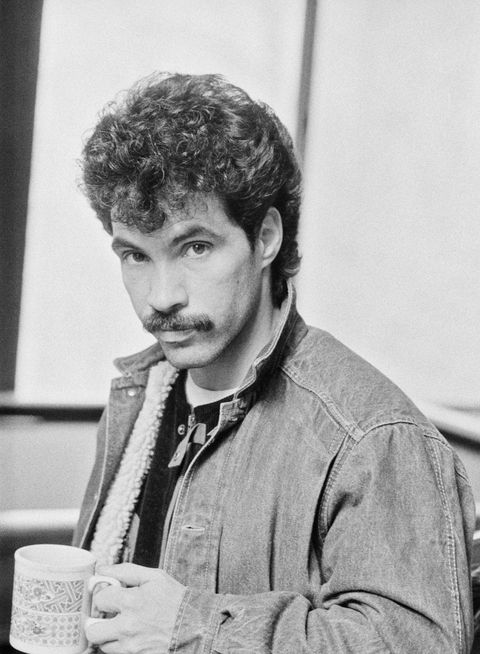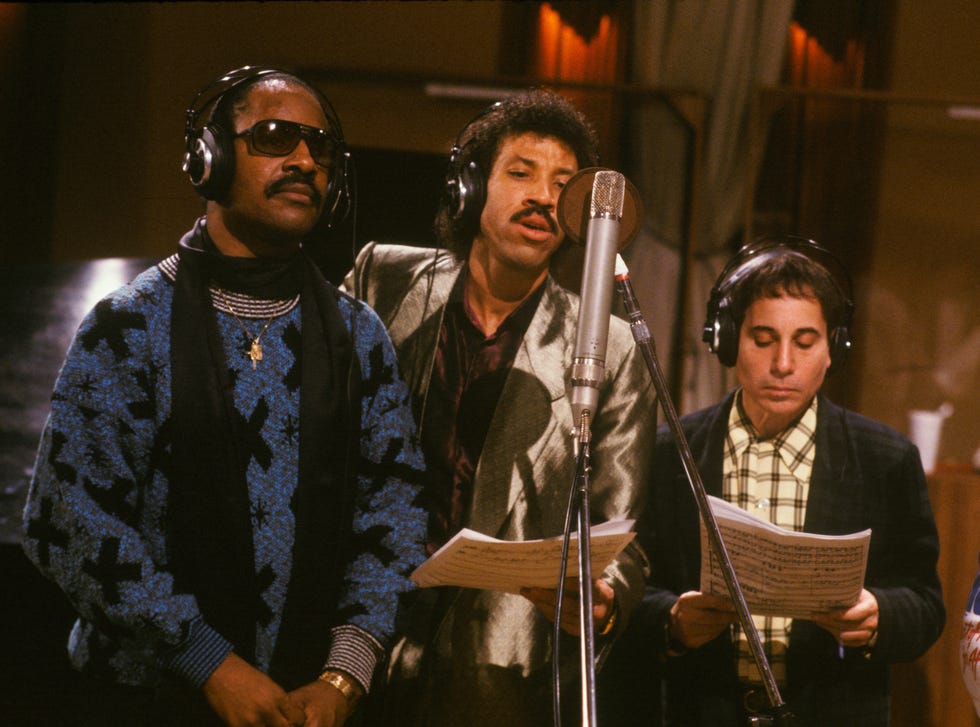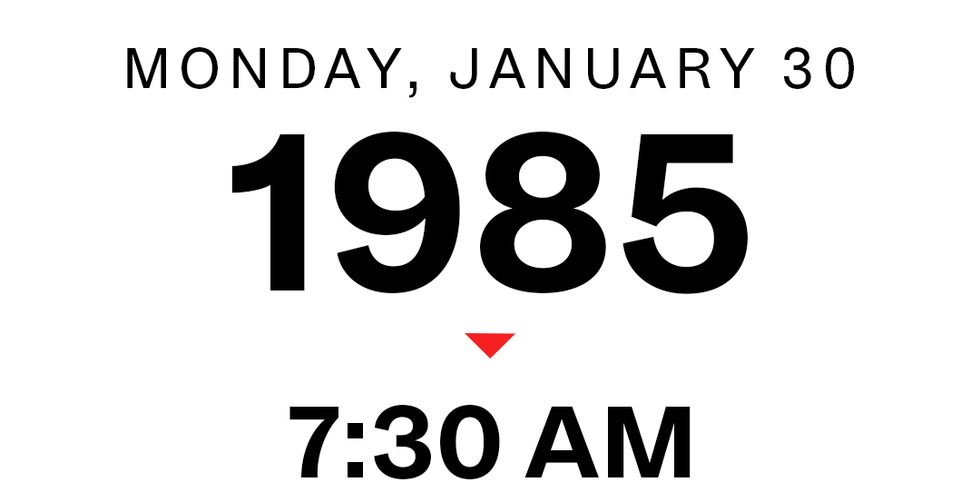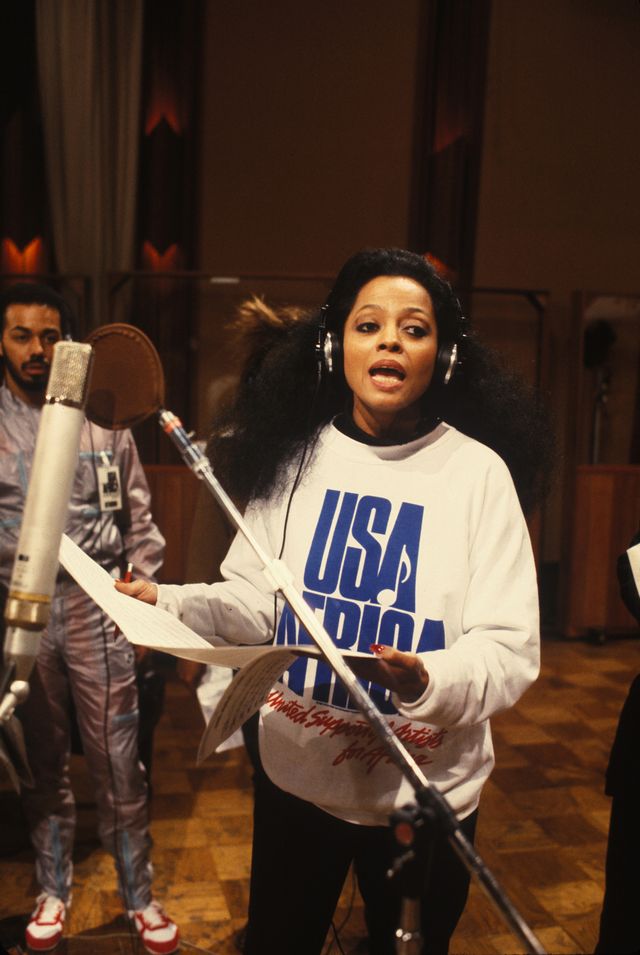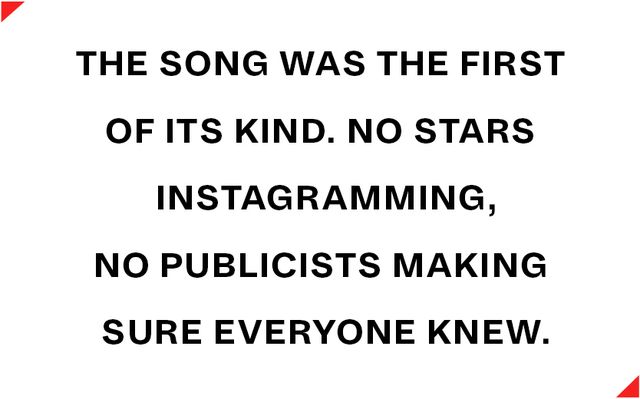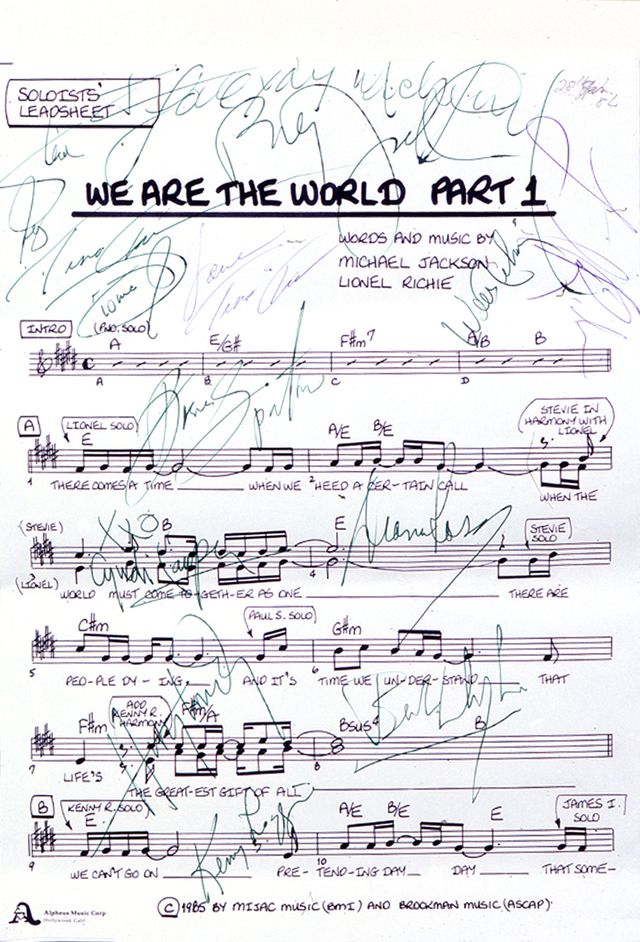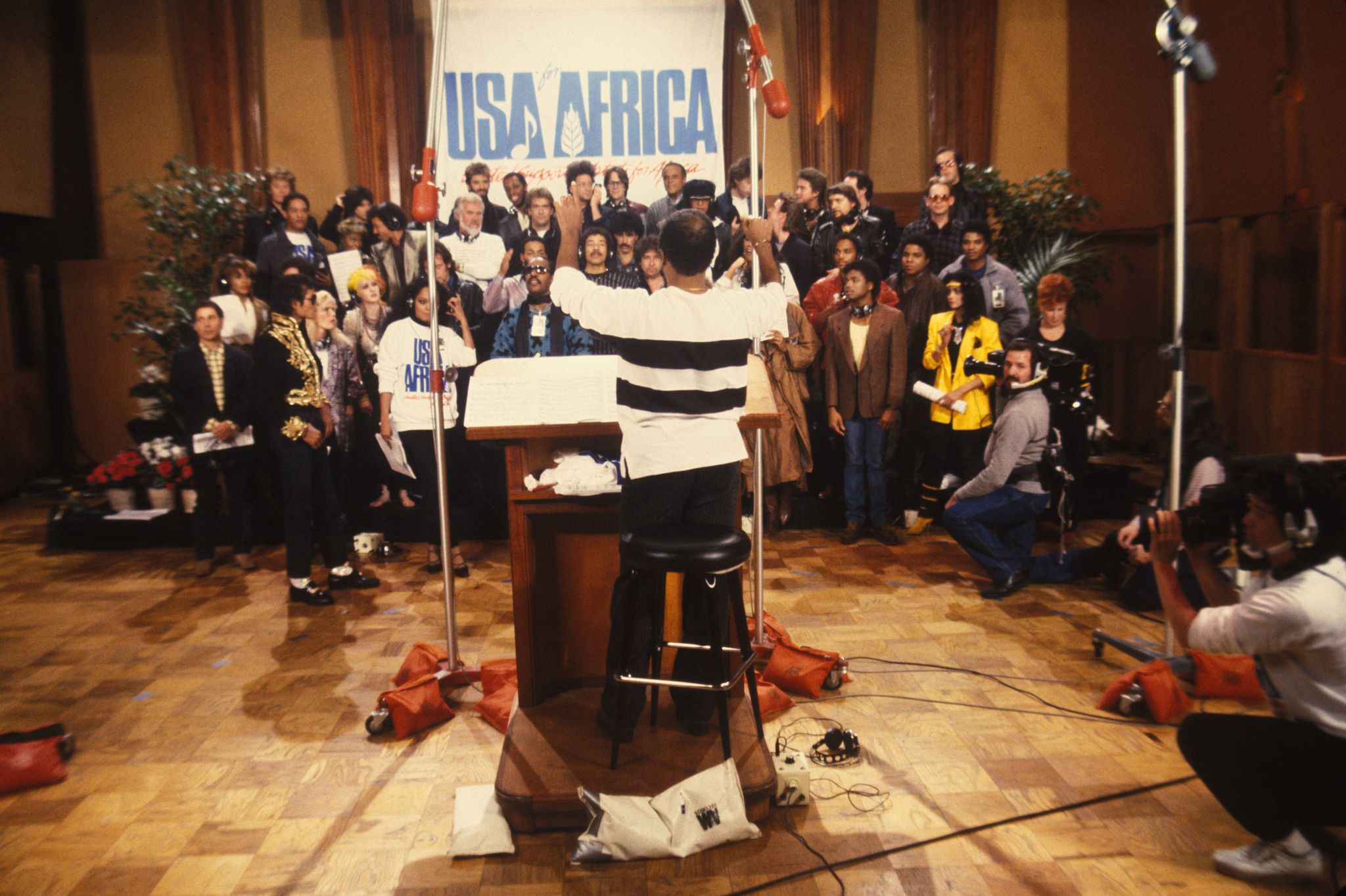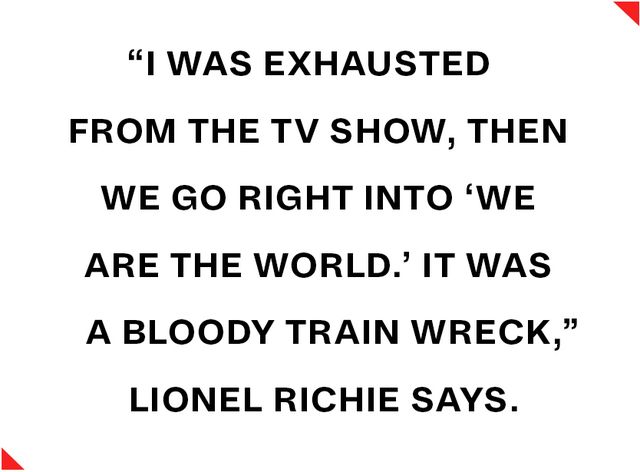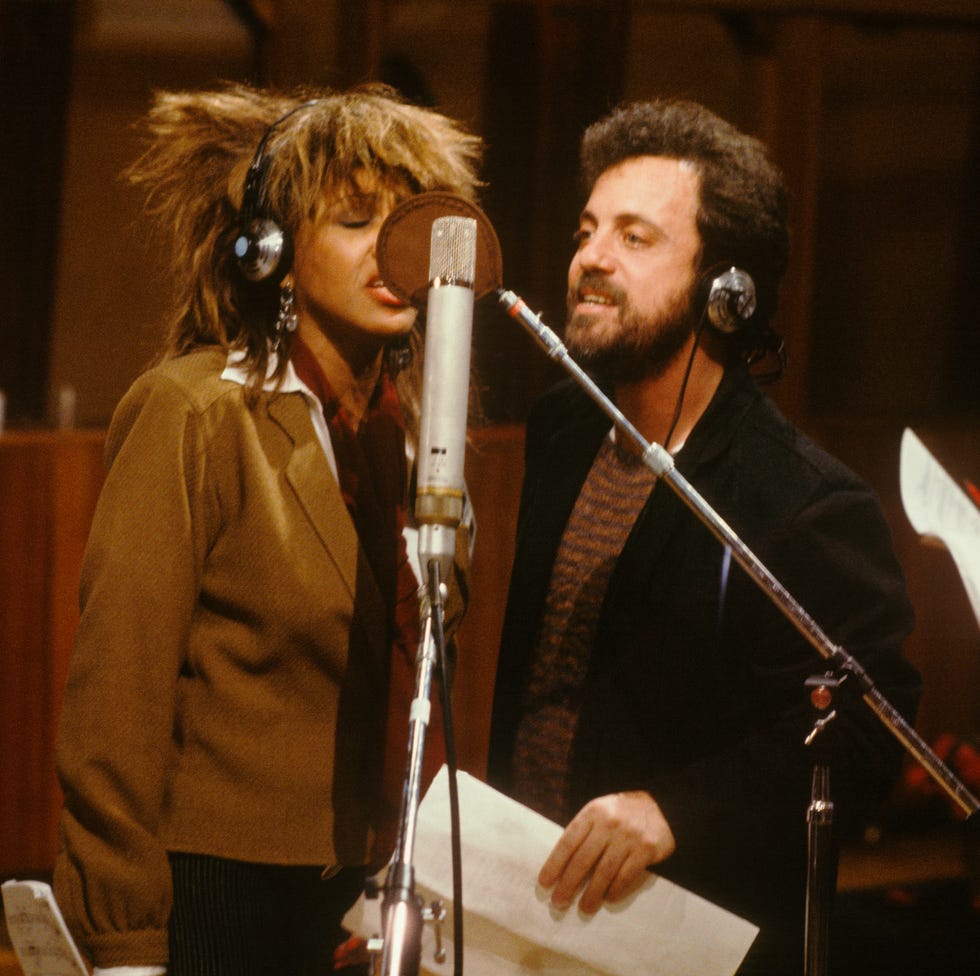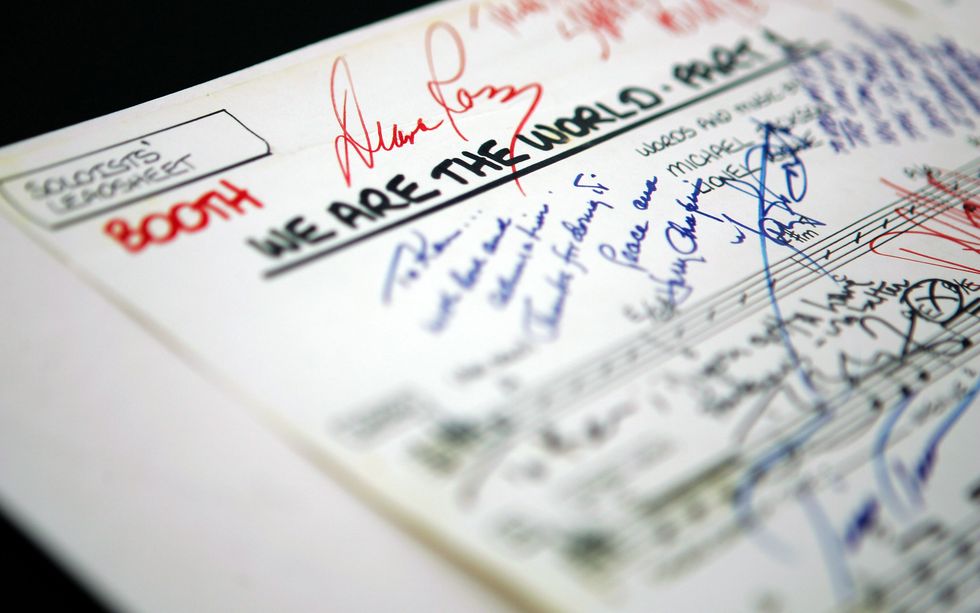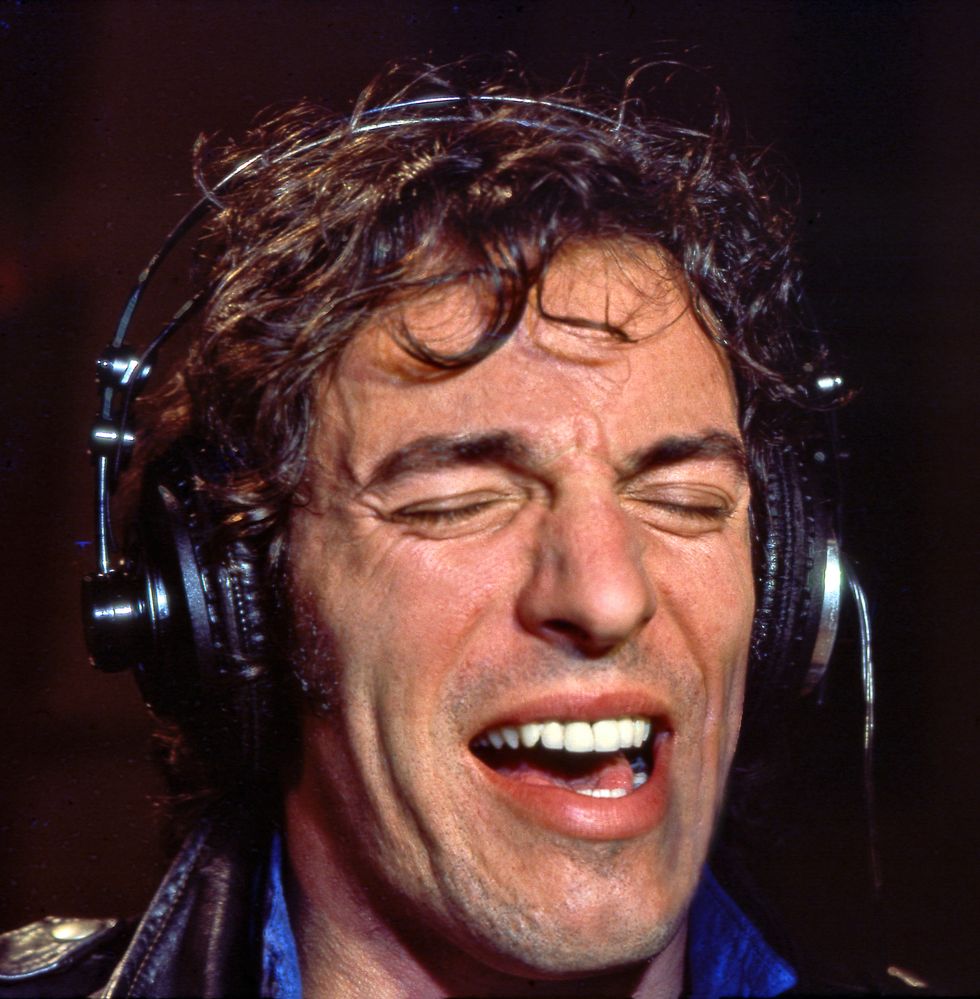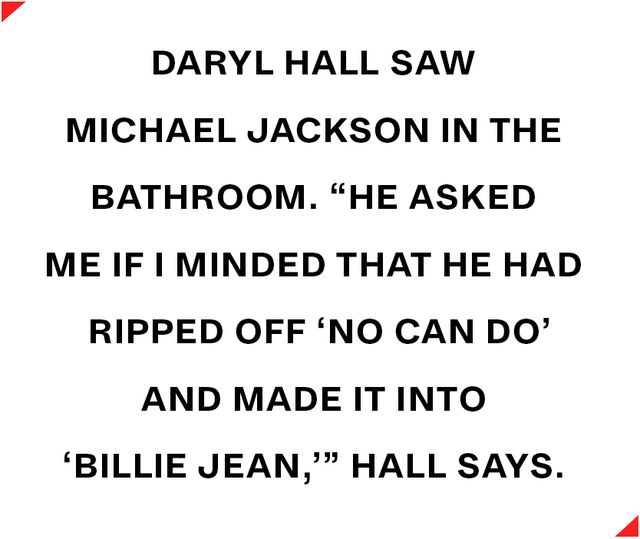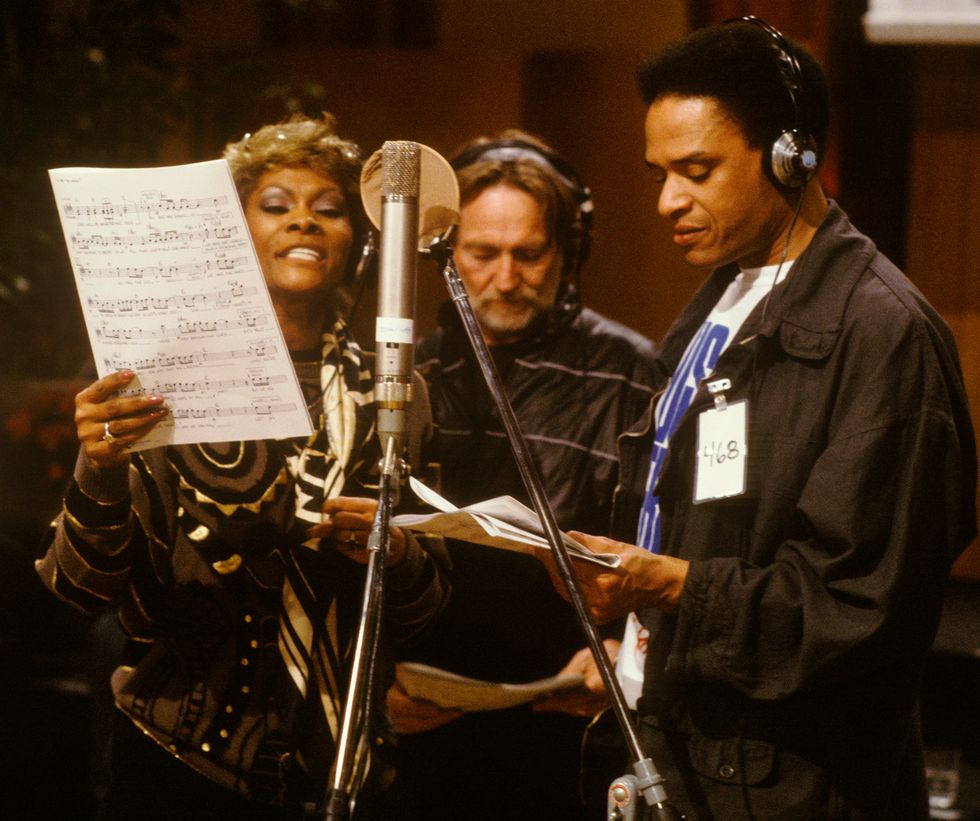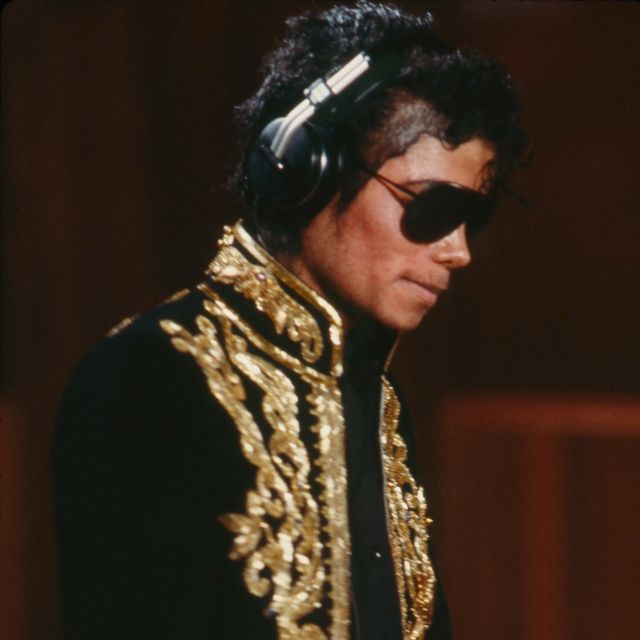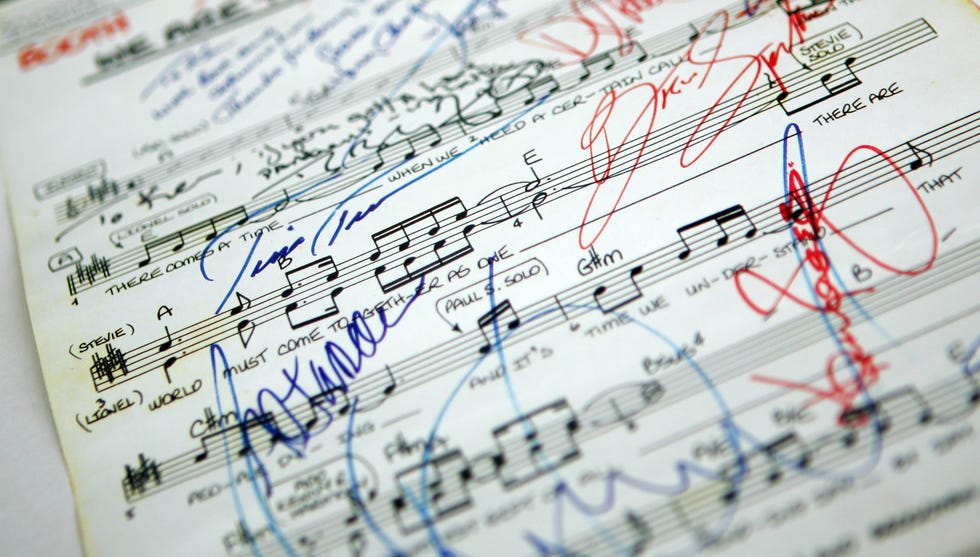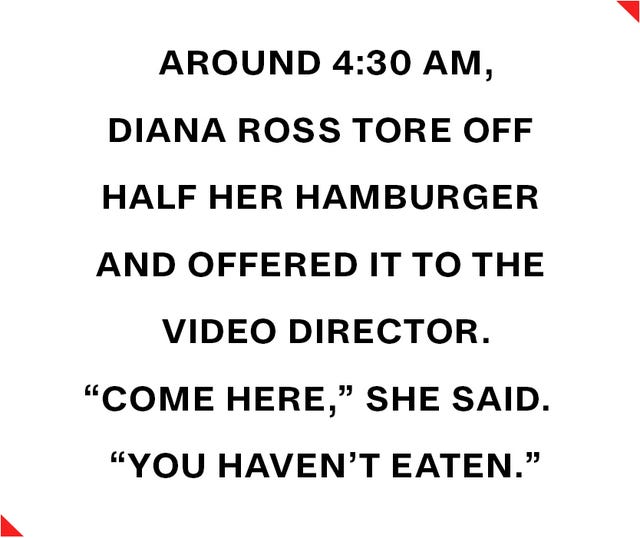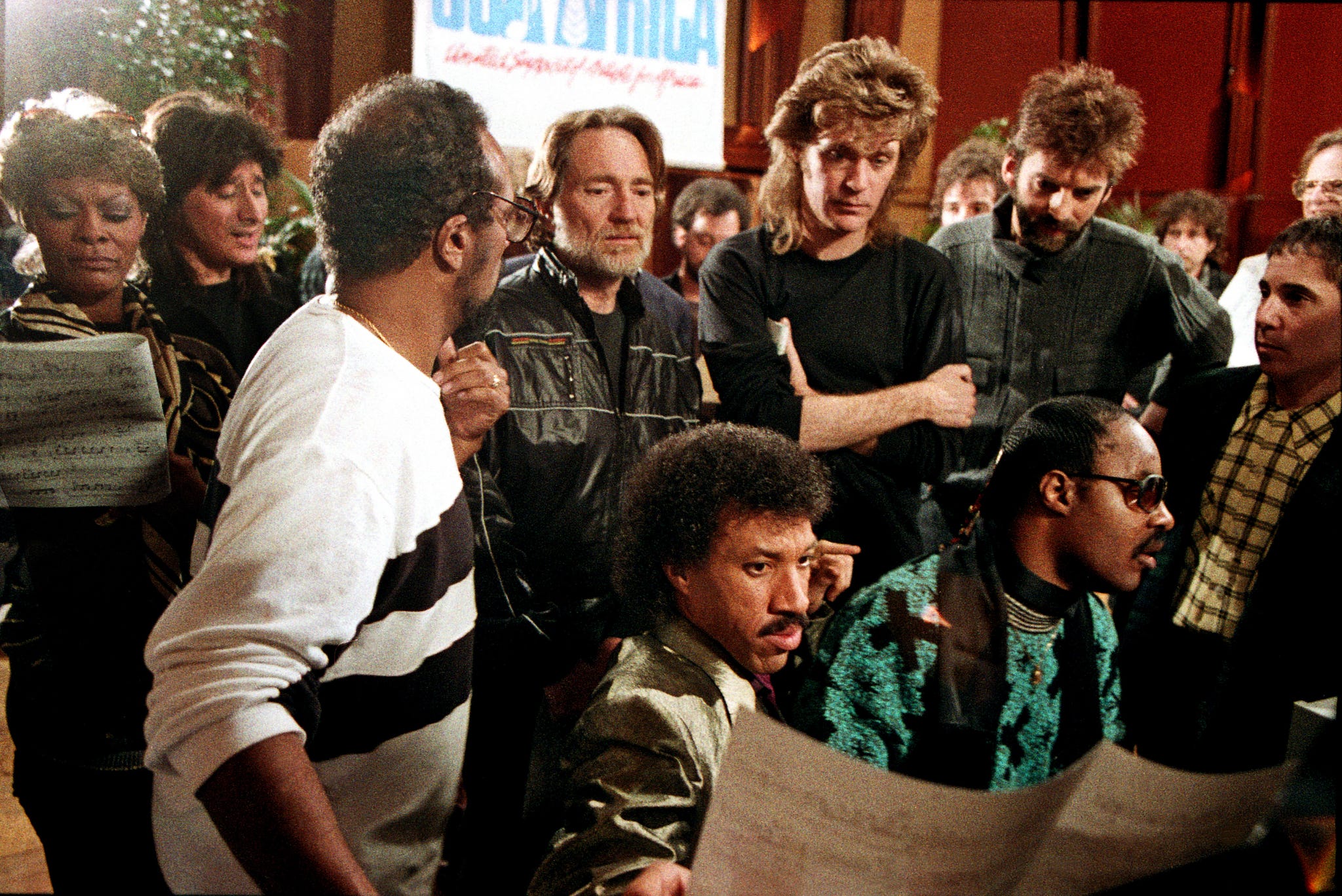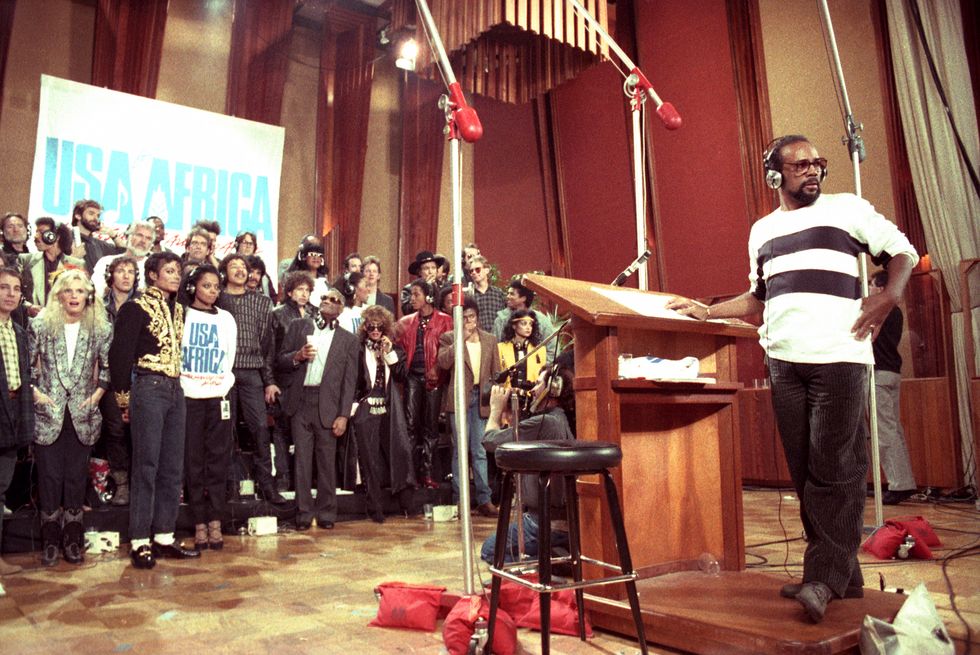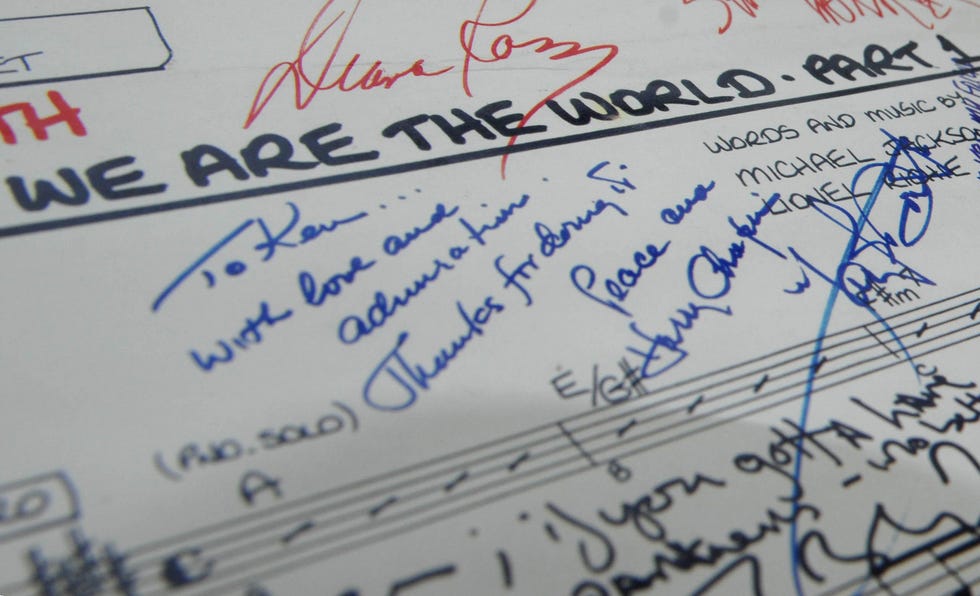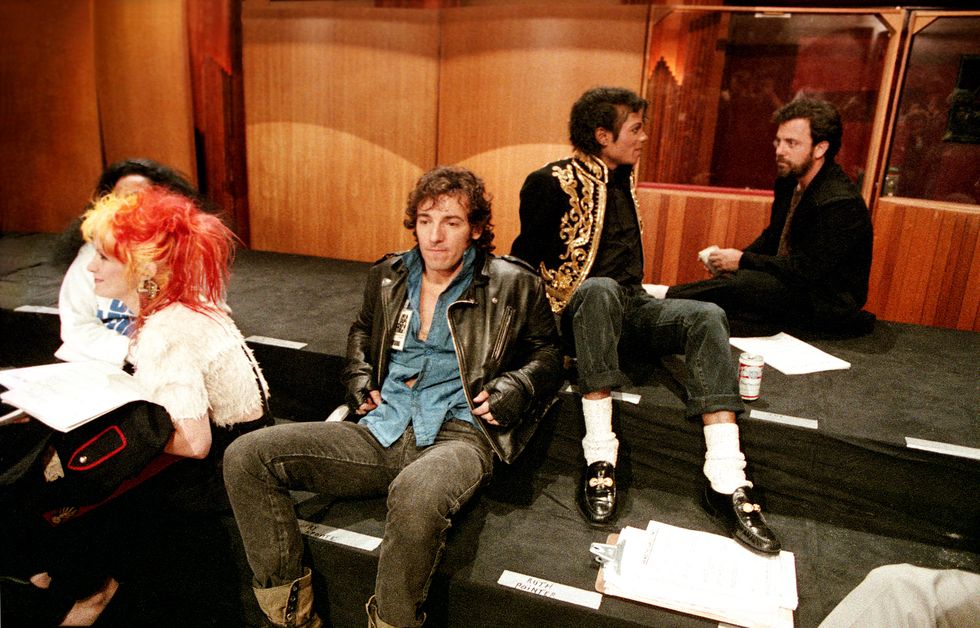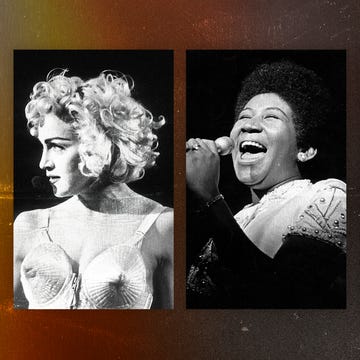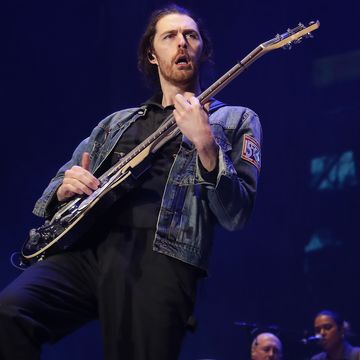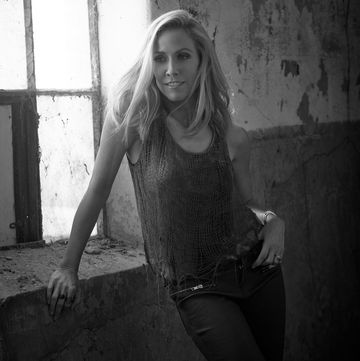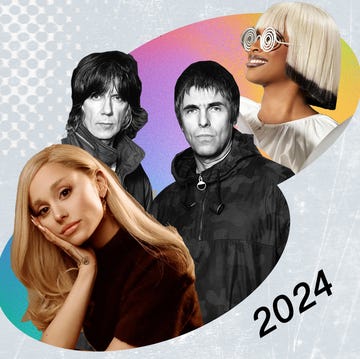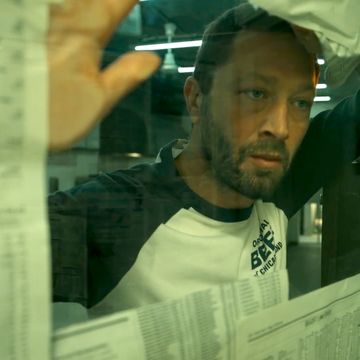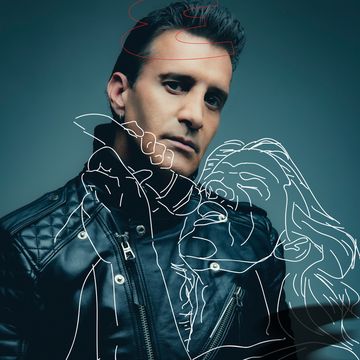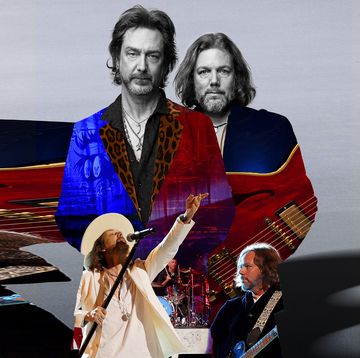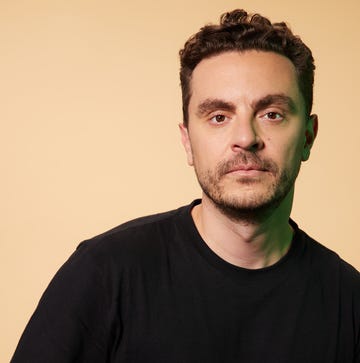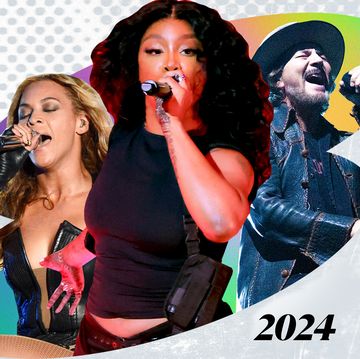Little John Oates lay on the living-room floor at his friend’s house, propped up on his elbows, his chin in his hands, staring at the blind man on the record cover, listening to him sing.
John was in sixth grade in North Wales, Pennsylvania, a nice workaday suburb of Philadelphia. He lived on Tenth Street, a straight line between Prospect and Walnut, and he could walk to the house of this one friend whose parents had a console stereo. The turntable was built into a handsome wood cabinet, and the sound that fuzzed out of the big speakers just wrapped itself around little John Oates. Not many people in North Wales had console stereos, so John used to love going to this one friend’s house and listening to records for hours.
The record he listened to the most was The Genius of Ray Charles. It started with a bang of horns on the very first track, “Let the Good Times Roll.” The fifth song, “When Your Lover Has Gone,” was a beauty, all about love and sadness: “When you’re alone, who cares for starlit skies / When you’re alone, the magic moonlight dies.” By the time Ray got to “Don’t Let the Sun Catch You Cryin’,” John was far, far away from this room, this little town.
He knew every inch of the record cover: Ray’s name in the red banner above the photograph of him in the studio, suit jacket hanging from his shoulders, silver microphone hanging down, delivering Ray’s voice to the sound booth and then to the phonograph record and eventually to the console stereo in the living room of a house in North Wales, where a kid who would grow up to be an international pop superstar sometimes singing about love and sadness—this little kid would sit for hours, listening to Ray Charles.
He knew the songs by heart and sang them as he ran up Tenth Street to get home in time for dinner.
It was early, for a musician. For any musician, and certainly for Lionel Richie, who in January 1985 was one of the top pop stars in the world. His signature hit of the past twelve months, for crying out loud—number one on the Billboardcharts—was called “All Night Long (All Night).” He’d spent much of the past year on the road—New York, Hartford, Detroit, Vegas, Kansas City, Vancouver, Oakland, freaking Boise . . . it was a blur. The record company kept rolling out singles. Two went all the way to number one, three more to the top ten.
Then there was “We Are the World,” the song he wrote with Michael Jackson to raise money for famine relief in Africa. (In Ethiopia alone, more than a million people had starved to death since 1983.) There had been a lot of late nights in Encino lately, at Jackson’s house, writing, rewriting, arranging, second-guessing. And the other night they were here at Richie’s house until it must’ve been 3:00 in the morning, sitting on the floor—Jackson, Quincy Jones, Jones’s arranger Tom Bahler, and Richie’s manager, Ken Kragen, the guy who put “We Are the World” together—writing on index cards the names of everyone they hoped would join the recording session, figuring out who was going to stand where and who would sing what part.
Now, tonight, they would actually record it.
But before that were the American Music Awards, televised on ABC, one of the biggest nights of the year. Kragen’s masterstroke in scheduling the recording session was doing it on the night of the awards, when so many artists would be in town.
Richie not only was nominated for eight awards; he was hosting the thing, too. He was supposed to be over at the Shrine Auditorium by 10:00 this morning for rehearsals.
It was 7:30.
Early.
They would run through the whole show, starting with a long opening dance number choreographed to Richie’s big hit “Running with the Night,” which he would perform wearing a gold lamé suit, surrounded by a dozen dancers.
The drive to the Shrine, from Richie’s house up on Funchal Road near the Bel-Air Country Club, was about a half hour.
Thirty-five years later, when he’s asked about that day, this is the first thing Richie will say: “Let us first trace the meaning of the words delirium and exhaustion.”
Twenty-five hundred miles away, Bruce Springsteen was getting on a plane.
You talk about exhausted. The night before, he played the final show of the latest leg of the Born in the USA tour at the fifty-thousand-seat Carrier Dome in Syracuse, New York. It was his fifteenth show that month, and it was epic. Twenty-nine songs, over four hours, ending with a killer cover of John Fogerty’s “Rockin’ All Over the World,” reserved for special occasions.
His manager, Jon Landau, had originally told Kragen that Springsteen was a long shot for this “We Are the World” thing. He’d been touring for so long, and he had a break before picking it up again overseas, and, well . . . Landau would see what he could do.
Then Landau called Kragen back a couple weeks before to tell him Springsteen was in, and the dominoes began to fall. Instead of Kragen calling managers and agents all day to recruit artists for this project, everybody started calling him.
Bruce was in. Everybody wanted in.
There was a whale watch in the morning, off Redondo Beach.
Henry Diltz, forty-six years old, already one of the great rock ’n’ roll photographers, woke up to get his nine-year-old daughter, Zoë, ready for her field trip. They made it to the boat on time, and the kids even saw a few gray whale backs off the coast.
Kragen had worked with Diltz a few times, and he hired him to take pictures of the recording session at A&M Studios that evening. Diltz didn’t even know the name of the song. In his journal that day, he wrote, “USA Africa recording for Ethiopia food.”
Richie got through the opening dance number and the monologue, in which he announced that the “key word” for the night was outrageous. He shouted the word from the stage throughout the evening. “Outrageous!” He glittered. He cracked jokes.
About an hour into the show, Huey Lewis (who would join the “We Are the World” session later) and Madonna (who wasn’t invited) announced the winner in the “favorite black album” category. Prince’s Purple Rain beat out Jackson’s Thrillerand Richie’s Can’t Slow Down.
Prince was invited to the recording session, and Quincy Jones, the song’s producer, had a solo picked out for him. There had been talk of tension between Prince and Jackson, and Kragen loved the idea of them overcoming their differences to join forces for a great cause.
Things were still coming together. “We were still pulling in people during the awards show,” Richie says. “We were still trying to get Cyndi Lauper to show up. And at the very last minute, Cyndi said she would show up.”
And Jackson, who was nominated for three awards?
Smelly wasn’t there.
Smelly—that’s what Jones called Jackson, as a joke, because he was so polite—was already across town at A&M Studios, standing alone in the middle of the parquet floor in Studio A. He wore tight black pants and his signature black jacket—part military, part Sgt. Pepper, with the shoulder pads and the ornate gold embroidering. He wore his jewelencrusted white socks, the ones that sparkled when he moonwalked. And black aviator sunglasses.
Tommy Trbovich, a veteran director who was making the music video and documentary of the session for the charity established by the project, stood with a Norelco video camera on his shoulder, filming Jackson as he sang the chorus. Trbovich and his crew of about fifty had been there since early afternoon, running cables, rigging lights. Right now he and Jackson were the only two people in Studio A.
“Quincy, do you think—”
Jackson had his right thumb hooked in his pants pocket, his left hip sticking out, his high-water pants revealing those socks. Jones sat in the control booth, and they looked at each other through the glass, hearing each other through headsets.
“I’m saying ‘you’—should I say ‘you and me’ or ‘you and I’?”
“We Are the World” was the first of its kind. It wasn’t like Oh, here’s another one of these charity things, as it would be today, where all the artists Instagram it and their publicists make sure everyone knows. There was only one precedent, a song that was still on the charts: “Do They Know It’s Christmas?” cowritten by Bob Geldof and recorded just a couple months earlier, in November, by a crowd of UK pop and rock artists. They had some big names—Sting, Bono (although U2 wasn’t so huge yet), some Duran Duran guys. Spandau Ballet. And it was raising serious money for the famine. But when Kragen called music managers in L. A. and New York, recruiting singers for “We Are the World,” he still had to explain it.
It was all a little haphazard.
And so with forty-five huge stars due to arrive in an hour to record the song, Jackson was there, laying down the chorus, doing his own backing vocals, and still trying to decide on the words.
“I like ‘you and me,’ ” Jones said.
“’Kay,” Michael said, shifting his weight. “It’s much more soul.”
“Yeah, it’s more soulful. Country.”
Jackson shifted his slight frame from foot to foot.
“Country,” he said in his high voice.
And he sang.
We are the world, we are the children. We are the ones who make a brighter day, so let’s start giving . . .
Every so often, Jones asked him to take a few steps back, farther from the microphone, and Smelly had to look around his famous feet to make sure he didn’t trip over Trbovich’s red sandbags holding down the lighting tripods.
. . . It’s true we make a better day, just you and me.
As Jackson sang in solitude, Steve Perry of Journey was already in the control booth with Jones, wearing a pair of headphones over his great hair, listening to Michael Jackson singing. Perry looked at Jones, and out at Jackson, and said, “Am I dreaming? Am I on drugs?” And Smelly let out a good laugh in the middle of the line he was singing.
Harriet Sternberg worked for Kragen as his head of creative services, which just meant she did everything Ken didn’t.
She’d had a lot of duties leading up to tonight, including mailing out forty-five numbered cassettes of a demo that Richie and Jackson recorded so that the artists could hear the song ahead of time. She had called Fred Smith, the CEO of Federal Express—he answered!—and asked if his company would ship the tapes at no charge, as a donation. He agreed. She offered to credit Federal Express on the album—but he said, No, please don’t do that. Then everybody will be calling.
To get into A&M Studios, you pulled off La Brea Avenue through a manned gate. This put you in a plaza in the center of the small campus of low-slung buildings. A&M was built as a movie lot by Charlie Chaplin in 1917. “It’s like a little mini movie studio,” singer Kim Carnes says. “A magical place.”
It’s a tight layout, and one of Sternberg’s jobs was to figure out parking. She had a plan: A lot of people wanted to be there, but you couldn’t just come, no matter how big a honcho you were. One of her friends, Ron Oberman, a senior A&R man at Columbia Records—a big-deal guy—wanted in.
Sternberg figured out a way to get Oberman on the premises: He could park cars. And so he stood inside the gate, waiting for people to arrive, at which time he would park their cars.
Once the American music awards let out, the stars were lining up to get through the A&M gate. Behind a small ring of shade trees were two entrances. One, to the left and up three steps, was the thick wooden door that led to the anteroom outside Studio A.
The other entrance, under an outdoor staircase to the right, led to what was known as the Chaplin Stage—a room more than half a football field long where they filmed movies and television shows. This was where the several hundred people who were not singing “We Are the World” would be hanging out. There was a strict rule: No one except the artists would be allowed in Studio A. No wives, boyfriends, managers, or publicists. No old bandmates from the Commodores. There was no red carpet.
“Separating everyone from their families was the toughest part, because everyone wanted to walk their wives and mothers and fathers and everyone, the family members, into the recording studio,” Richie says. “And we had to go, No, the families are over to the right. The artists will be over to the left.”
People shrugged. Okay!
Daryl Hall and John Oates rolled in with their manager. Billy Joel, still wearing a scarf over his winter coat—he flew in from New York, where it was 28 degrees that morning—and his fiancée, Christie Brinkley, arrived and gave each other a quick peck, then she was shown to the Chaplin Stage while he ambled over to the big wooden door.
Dionne Warwick was doing a residency at the Wynn Las Vegas and recalls that Steve Wynn had given her the night off to participate—flying her to Los Angeles for the night in his jet. “I was ordered by Mr. Quincy Jones to be there,” Warwick says. “When Quincy speaks, everyone listens.”
Bette Midler. Cyndi Lauper. Kenny Loggins. Willie Nelson. It was like a record store come to life. Everyone looked a little mystified. Smiling, yes, but . . . maybe not quite sure what was happening.
At one point, the gate opened for a man on foot: Springsteen. Jeans, black leather jacket, gloves with the fingers cut off. Twenty-four hours ago, he was on a stage in Syracuse. He drove himself to the studio in a rental car, and he told Kragen, “I got a great parking spot right on La Brea!”
Stepping from the parking area into the anteroom and finally into Studio A was like leaving the natural world. “Everybody usually walks around with their assistant, or their entourage,” Hall says. “But you had to walk in the door yourself, just you, and be in this room with a lot of people like you, with your peers, many of whom I had never met, and vice versa—they had never met me. It was—what’s the word?—slightly disconcerting. I’m a pretty self-sufficient guy, but I’m used to walking into a situation having some support around me.”
Inside, a simple sign hung over the entrance to the studio, taped to the wall. This sign would become famous, a piece of “We Are the World” lore. But it was real. Jones hung it himself: check your egos at the door.
Rock stars don’t all know one another, and some of the most famous humans on the planet were meeting for the first time. But in a strange and spontaneous instinct, many of them hugged. Joel hugged Jackson. Loggins hugged Springsteen. Diana Ross hugged Sheila E. while Bob Dylan stood behind them, not hugging anybody.
Black risers had been set up at the far end of the studio, facing the control booth. Jones and Bahler had put down tape with everyone’s name on it. Jackson, who had basically grown up with Ross, had looked at the layout earlier and said, “Diana doesn’t like where she’s standing.” Jones just nodded—he got it—and Ross ended up in a prime spot in the front row, between Jackson and Stevie Wonder.
This was for the first task of the evening, which Richie wanted to get to right away: the chorus.
“My job was to kind of make sure everybody stays on point,” Richie says. “Quincy was gonna hold down the recording session. And Michael was going to be—I laugh at this—he was going to help me keep order, but of course Michael at that particular time didn’t do a lot of talking. And I was exhausted from the TV show, and then we go right into ‘We Are the World.’ Well, it was . . . a bloody train wreck.”
After the giggly hour of greeting and hugging and awkward but endearing introductions, Jones and Richie began to ask people to get in their places.
“Everybody was sort of left-footed,” Hall says. “We were all like, Whoa, what are we doing? Everybody had to figure out how to relate to each other. So everybody started to act like they were in the eighth-grade chorus. It was the weirdest thing I’d ever experienced. All these superstars, whatever you want to call them, we all turned into junior-high kids in chorus, and Quincy became Mr. Jones. That’s how it shook out. Laughing like kids.”
Jones stood at a blond-wood podium on a wheeled platform—the kind you’d see in a middle school music room. With everyone in their places, Jones introduced Bob Geldof, referring to him as “the inspiration for this whole thing.” (Ross, in the first row, clapped and shouted, “Yay, Bob!”)
A few months before, in October 1984, a British journalist named Michael Buerk traveled to Ethiopia to report on the famine. He brought with him Mohamed Amin, a Kenyan photojournalist, who filmed footage of gaunt children with ribs exposed from hunger and flies on their faces.
Their report aired on the BBC, where Geldof saw it and quickly wrote “Do They Know It’s Christmas?” The song was popular during the holiday season that year and would raise about $10 million to help fight the famine.
Harry Belafonte saw the report and had an idea to organize a concert of all African-American musicians to raise money for the cause.
He called Kragen for help.
“Harry,” Kragen said. “The thing about a concert is it’s next to impossible.”
Kragen used to manage Harry Chapin, the superstar free spirit of the seventies, until the day Chapin died in a car accident in 1981. Chapin was always raising money to fight hunger and homelessness. Kragen had been trying to put together a blockbuster concert to support Chapin’s legacy, and the logistics were hell.
But he had another idea. Not a concert.
“A song! Geldof has shown us the way,” Kragen told Belafonte. “And we’ve got bigger stars here. Let’s go right from the Billboard charts. Who’s big? We want to sell records.”
Belafonte now stood on the top row of the risers, next to one of the guys from Ghostbusters (Dan Aykroyd, Blues Brother), watching his old friend Jones introduce the Irish punk with the big heart.
“Bob just came back from Ethiopia, and he’d like to talk to you,” Jones told everyone.
Geldof stepped forward, his collar turned up, his hair carefully mussed. He let out a little laugh and said, pretending to be modest, “Oh, would I?”
Ray Charles was in the front row.
He had ridden the wave through the door from the anteroom into the studio, holding a Styrofoam coffee cup, suit jacket hanging from his shoulders, a guide at his elbow. Shuffling in like everyone else. But in a room full of stars, including a half dozen legends, Charles was of a higher order.
Many of the participants didn’t know ahead of time that he would be there. They didn’t know who would be there—but they certainly didn’t know Brother Ray would be there.
Lionel Richie: “When Ray came in and opened his mouth, we just kinda all fell over in the corner and said, ‘Wow, did you hear that? That’s Ray Charles.’ It was just brilliant.”
And then there was Oates—little John Oates from North Wales, Pennsylvania, in the middle of this pack of pop stars and rock legends, standing on the piece of tape on the risers that had his name on it. He could have reached out with his left hand—right across Bob Dylan’s head—and touched Ray Charles on his right shoulder, the one closest to the camera in the photograph on the cover of The Genius of Ray Charles.
“I said to myself, This is a good place to be in my life right at this moment,” Oates says.
Jones pointed to more strips of tape on the floor with names written on them in blue. He told everyone these were for the solos, which would be recorded later, after they laid down the chorus.
This was a little awkward. Anyone who didn’t see their name now understood that he or she had not been given a solo. One piece of tape said, daryl hall, with steve perry and michael jackson on either side. The name of John Oates, Hall’s other half, was not written on a piece of tape on the floor.
“I can’t say I wasn’t a little disappointed,” Oates says. “I was obviously not worthy. But at the same time it was cool. When Daryl and I perform together, Daryl’s the lead singer—he’s the guy. And he’s got an amazing voice, and of course he deserved it. Quincy and Lionel and Michael knew exactly what they were doing. You’re dealing with those three guys, you’re dealing with guys who really know how to make a record.”
Jones just kept talking, laying out the plan for the night. After the chorus, the risers would be dismantled and they’d do the solos. He turned and raised his hand to the control booth.
“Can I hear it, Hum?”
Humberto Gatica, the engineer, played the demo that Jackson, Richie, and Wonder had recorded—just those guys singing the chorus, plus every solo part. Some of the artists hadn’t listened to the tape Sternberg had sent, so they were hearing the tune for the first time. And a few of them weren’t that into it.
Maybe more than a few.
“I don’t think anybody liked it,” Joel says. “There was a lot of, like, side-eye. There was a lot of looking at the other person, and I remember Cyndi Lauper saying, ‘It sounds like a Pepsi commercial.’ There was a couple of chuckles and a few grunts. That was pretty much the consensus, I think. But nobody was gonna say, ‘I’m not doing that.’ ”
The lyrics, as written, read, “We are the ones that make a better day, so let’s start giving . . .”
But a lot of people seemed to be saying brighter instead of better.
Someone asked, “Is it brighter or better?”
“Whichever one feels good,” Richie said. “Better or brighter? Brighter’s the one everybody’s leaning to, right?”
Everyone looked at their sheet music. Paul Simon, wearing a blazer over a checkered shirt buttoned to the neck, conferred with Tina Turner and Billy Joel. “Seems like they’re making a change,” he said.
“I think it should be brighter, all the way,” Joel said.
“Me too. It felt like everyone was singing brighter.”
Springsteen was looking at his music. “This is brighter?”
Huey Lewis leaned over his shoulder. “No—better, yeah, that’s gonna be brighternow.”
Springsteen: “Do I ever sing this?”
“No,” Lewis said. “It’s gonna be brighter. [Singing to Springsteen] ‘It’s true, we make a brighter day.’ ”
Wonder seemed to be the lone holdout. “Better has more bite,” he said.
Jackson had an idea for another change. He proposed adding some African-sounding lyrics to the chorus:
We are the world . . . Sha-lum!
We are the children . . . Sha-lingay!
Jackson stood before his peers and sang it himself, a cappella. Jones kind of nodded. The ensemble tried it, with and without the instrumental track.
Then Wonder presented the idea of singing a few lines in Swahili. A few people later said they could feel the energy getting sucked out of the room.
Finally, Ray Charles, still holding a Styrofoam coffee cup, his headphones around his neck, jerked his head up and said to his old friend, loud enough for all to hear, “Ring the bell, Quincy. Ring the bell!”
The genius had spoken. The sha-lum and Swahili ideas were put to rest. (The episode was chronicled in great detail by journalist David Breskin for his excellent booklet We Are the World, published as a fundraiser soon after.)
They took breaks, but the recording dragged on. “There was a table piled up with cold cuts—sandwiches and stuff. Bruce and I kept wandering over to the deli table, hitting on a beer or a sandwich,” Joel says. “It wasn’t like church, you know?”
But it must be said: When the group sang together, hitting every note of the chorus Jackson and Richie had written, full volume, it felt like a new sound, something human ears had never experienced.
Henry Diltz was standing next to Jones, seeing it through his camera but hearing it with his whole body. “The heavenly choir,” he calls it.
Prince was supposed to be there.
He was invited, and although he never quite confirmed, he did perform at the American Music Awards, and it was Jones’s understanding that he was coming to the session. The great producer chose a solo line for Prince, right after Jackson’s line—a clever juxtaposition of two artists who were reputed to detest each other.
“There was a spot being held for him,” says Sternberg, master of the attendance list. “Sheila E. was trying to get him there.”
But Prince didn’t show. The next day, it was reported that he’d been hanging out at a restaurant, Carlos ’N Charlie’s, and that two of his bodyguards had been arrested after getting in a fight with some photographers.
“I think I got Prince’s line,” Huey Lewis says.
After the chorus, Jones called Lewis over to where Jackson was standing and said, “Smelly, sing him the line.” And Jackson sang: “But if we just believe, there’s no way we can faaalll.” Lewis sang it back perfectly, Jackson laughed—a tiny, Jacksonian laugh—and Lewis smiled, raised his eyebrows, and said, “Can I go now?”
Some time passed between the end of the chorus and the solos. At one point, Springsteen sat alone on the risers, nursing a Budweiser. Jackson and his personal photographer, Sam Emerson, were sitting nearby. Springsteen got up and left the beer can. Emerson said to Michael, “Hey, Mike, let me take your picture with the beer can.”
Jackson said, “No, no, I can’t do that.”
Emerson said, “Come on! Who will ever see it?”
They did the photo, Jackson sitting straight-faced, holding the Boss’s beer.
The next week, Emerson says, it showed up in the New York Post. Emerson’s agent called him and said, We’ve got big trouble. Emerson just about fell to the floor. Who had leaked it? His agent said he would investigate and call him back.
Turns out Jackson had had his publicist, Norman Winter, plant it. As a joke.
Later, Trbovich saw a chance to approach Dylan. Almost twenty years before this night, Trbovich was working for Johnny Cash in Nashville. One night, Cash invited him over for dinner at his house along the Cumberland River. Trbovich showed up to find Joni Mitchell, Graham Nash, Dylan, and a few others. After dinner, a guitar was passed around, and Nash played a new song he was working on, “Marrakesh Express.”
So Trbovich went up to Dylan before the solos got under way and said, “You don’t remember me . . . .” He reminded Dylan about that night back in the late sixties. Dylan looked at him, nodded, and almost smiled. “That was a lovely night,” he said. “You were there?”
Richie claims he gave himself the first line of the song so he could get out of the way.
“I looked at the talent that was coming that night, and I wanted to get out of the way early, because when you start thinking Ray Charles is coming in that lineup, there’s Springsteen sitting over in the corner, and there’s every major power singer in the world coming down that pipe—you know what? I wanted to get out of that barrage as soon as possible,” he says.
Still, he got the first line.
The soloists stood in a semicircle, each taking a line, with the next person coming in on harmony, then doing their own line, and so on. After Richie and Stevie Wonder opened the song, the next duo was Kenny Rogers and Paul Simon. Rogers was a big guy, six feet tall. The way he moved around was big, his hands were big, his beard was big.
Simon was five-foot-two.
Their voices, together, created perhaps the greatest unexpected alchemy on the recording: Simon’s avian, pitch-perfect smoothness cut with Rogers’s drawl, rising from somewhere down under the floor, was the aural manifestation of whatever genius lived inside the head of Quincy Jones.
The progression went left to right. Sometimes people messed up and Jones had them start over. This meant that Richie sang his line more than anyone, and the people way down on the right—Kenny Loggins, Steve Perry, Daryl Hall, Jackson, Huey Lewis, Cyndi Lauper, and Kim Carnes—got the fewest takes.
Hall says that it didn’t matter: “I hate to say it, but I did my part, and that was the end of it. Some of these people had to stick around and overdub themselves a number of times, because they couldn’t pull it off. I wasn’t nervous at all. I opened my mouth and sang. Plenty of people were nervous, and that sort of separates the proverbial men from the boys. I’m just a person who can do things. I open my mouth and sing. I left early. A lot of these people had to stick around to get their stuff right.”
But some of the soloists took the multiple takes as opportunities to experiment with their line. After all, you got only one little line, and zero rehearsal time, and you were likely singing harmony with someone you not only had never performed with but had never even met. So the only time to play with the delivery was live, on take after take.
Dionne Warwick was ninth in the line of soloists. After the first chorus, she came in with “Send them your heart, so they know that someone cares.” The first few times through, she sang it dreamily, the Warwick of “Then Came You.” “Won’t you send them your heart . . .” But about the seventh time it was her turn to sing, she belted out the line like a burst of gunfire: “Welllll, send ’em your heart!”
The lyrics Joel was given to sing did not move him in the same way. Jones was handing out solos—“Quincy was culling the herd”—and Joel felt honored to be pulled aside. He studied his line on the sheet music. Tina Turner would sing, “We are all a part of God’s great big family.”
“Then me: ‘And the truth, ya know, love is all we need.’ I looked at those lyrics, and I went, That’s what I get? ‘The truth, ya know’? And it was kind of a low part, too. I think a lot of people were trying to be virtuosos when it came to their part. I know Cyndi did—Cyndi jumped into this whole other octave. Ya yay ah-ya! But she can do that. She’s a great singer. I think everybody wanted to put a little filigree on it, so they jumped out. I looked at my part, and I thought, Don’t even try. Just hit the mark and shut up. It wasn’t a time to show off, for me.”
Joel and Turner were chatting, looking at their parts, and Turner put her hand on Joel’s shoulder and told him she had a headache. He happened to have an aspirin in his pocket, which he offered to Turner. “She said, No, I don’t take that! I only use homeopathic,” Joel says. “I told her, I don’t know what that means, but I ain’t got any.”
There was one bathroom, out in the hall toward the anteroom. Hall had to take a leak and found Jackson in there, too.
“Michael was in the bathroom, and he asked me if I minded that he had ripped off ‘No Can Do’ and made it into ‘Billie Jean,’ ” Hall says. “Which, I don’t believe it was a ripoff. He says, I hope you don’t mind that I stole it. And I was like, What? You did a good job of stealing it, because I didn’t notice. I guess he was referring to the intro, kind of a pumping bass line, like my bass line. That was in the bathroom. There weren’t that many places to go.”
Joel saw Jackson wandering off frequently to “a remote part of the studio, with this makeup cosmetic kit. And he kept, like, putting his nose on. Because I think the tip of his nose was kind of falling off, and he kept dabbing at it with makeup or smearing it with something.”
Winter, Jackson’s publicist, a legendary guy who had worked with Elton John and Dylan, was on the soundstage, with all the other peripheral people. But Winter didn’t like being a peripheral person. He kept hounding Harriet Sternberg, asking to be let into the recording studio, saying Michael wanted him in there. And then he started going around loudly telling anyone who would listen that Jackson had written the whole song himself, and that Richie—her boss’s client—had nothing to do with it.
Sternberg alerted security that Winter was no longer welcome, and he was escorted out. “He was out of line,” Sternberg says. “That was the one person I kicked off the soundstage.”
Harry Benson, the photographer who chronicled the session for Life magazine, was wearing his sport coat and looking for moments. Diltz was also hustling. Benson kept scowling at him, but Diltz kept shooting. There was also Emerson, whom Jackson had brought. “I’m sure Benson didn’t know what these other couple of dudes were doing there with their cameras, but he didn’t like it,” Diltz says.
By the time the solos got down to the end of the row, Kim Carnes—“When weeee stand together as oooooone!”—was worried whether she could even sing her part. She had a sinus infection—there was no way she was telling anyone that—and the part she was given, the end of the bridge leading back into the chorus, climaxed on a soaring note that would have been high in her vocal range even without a sinus infection. Plus, Lewis was harmonizing on the line, while Lauper backed them up with an aria of “yeah, yeah, yeah!”
Lauper, who was next to her, worked with Carnes on her line until Carnes could nail it even through her cold. “Cyndi was incredible. She knew. I said, Oh my gosh, this is high for me, and I’ve got such a cold. And she said, Let’s figure it out,” Carnes says.
Suddenly there were hamburgers.
Trbovich didn’t get many breaks throughout the night. He and his crew had to capture everything.
Nobody knew what time it was. Trbovich was filming away, and then through the blur of activity, Diana Ross—whose reputation was more diva than cuddly—walked over in her bare feet and said, “You haven’t eaten!” She was wearing one of the white cotton usa for africa sweatshirts that were handed out at the beginning of the night but that only she, Kenny Rogers, Ruth Pointer of the Pointer Sisters, and Al Jarreau wore.
She tore her burger in half and gave half to Trbovich. “She said, Come here, come here. You haven’t eaten,” he says, one of his clearest memories of the night and one of the few he didn’t see through a lens. “I don’t wanna say she was—let’s just say she had been difficult other times I had worked with her,” he says. But this was a different kind of moment, a different Diana Ross.
Before he walked down to one of the CYO dances on Friday nights in Freehold, New Jersey, the awkward kid who played guitar would first smear some Clearasil on his acne. He didn’t have a lot of friends, unless you counted the hardscrabble dudes he played music with. The kid’s father, who worked at the Nescafé plant in town, would be sitting at the kitchen table, starting on a beer. They lived next door to a gas station. After the dance, the kid would usually come home and stay up late—for a sixteen-year-old—playing his Kent guitar, single pickup, sunburst design, up in his room, unplugged so he didn’t keep anybody awake. When his father got pissed off, you could see the darkness behind his eyes, and the darkness sometimes kept the boy up for hours.
It could be a lonely town, Freehold. That was like any town, of course. But Doug and Adele Springsteen’s only son didn’t just live in a lonely town; he lived in a lonely house.
When he wasn’t playing his guitar, he listened to records. (He had sold his little pool table to pay for the guitar, so that was out.) And in late 1965, he was usually listening to one of the two albums that had been released that year by Bob Dylan, Highway 61 Revisitedand Bringing It All Back Home.
“How does it feel to be on your own?”
Bruce knew how it felt. And when he heard those songs, over and over, he knew Dylan knew how it felt, to need to get out of some place. Dylan, this kid Bruce would write in his life story more than fifty years later, “is the father of my country.”
“It can be like half singing, half talking.”
Jones was talking to Dylan. The producer was reassuring him that he could do his solo. The unusual nasal sound of Dylan’s voice was what made him Dylan, but in that room of recognizable voices, he appeared nervous and unsure. Even as Jones talked him through his solo, encouraging him, James Ingram, the supersmooth soul voice who was presently wearing a really cool tracksuit, strolled behind them. Warwick, whose vocal cords were made of honey, sat on the risers nearby.
Dylan crinkled his eyes at Jones.
“Did somebody else sing it already, on the track?”
“Huh?”
“So I can hear it?”
Trbovich was filming all of this. And yeah, he says, Dylan was nervous. “But can I tell you something? I swear: Most. People. Do. Get nervous in front of a camera. I don’t care who they are. I remember, the first Academy Awards I did, I was a stage manager. And I remember Katharine Hepburn digging her nails into my hand before she walked out there to this live audience.”
“Tell you what, Bob,” Jones said. “Stevie!”
He and Dylan met Wonder over at a piano, and Wonder played the chords of the song. All three of them tried to sing like Dylan, in unison. Even Wonder was doing his best Dylan impression, right there, to Dylan, to show Dylan how to sing this part like Dylan.
“There’s a choice wehr makin’, wehr see-vin ah own lives. Iss choo we make a brightah dee, jes yooo and meee.”
Dylan was rocking back and forth by now, singing along with himself. Starting to feel it. Behind this little work session, the other players milled around. Ingram, Jarreau, Joel, Springsteen, Richie. But when it came time for Dylan to record his part, Jones gave a little nod, and the room pretty much cleared. Only Wonder remained, at the piano, as a kind of comfort. And Trbovich, camera ever on his shoulder.
Dylan stood, black leather jacket zipped up, one thumb hooked in a belt loop, holding the sheet music up to his face, and sang it three or four times.
“Is that sorta it? Sorta like that?” Dylan asked, barely looking up.
Jones walked out and embraced him, and for the first time that night Dylan’s face spread into a smile.
He took a deep breath and walked back over to where the risers were. Springsteen stepped forward.
Headphones on, Springsteen moved his hips in a workingman’s dance, hearing the track as he waited to come in with his part. Jones later said Springsteen was “one of the hardest-working cats I’ve ever met before in my life. I kept waiting for him to get tired and sit down and rest. He kept saying, ‘Want me to do it again?’ ”
He sang the words as if a child were dying in his arms right then and there, his sandpaper rasp trailing into something like grief at the end of each line. When he’d finished, he opened his eyes and shuffled away from the mic. His peers broke into applause, especially Diana Ross, sitting cross-legged on the piano bench behind him. Springsteen, a ham, flapped his hands, as if telling the crowd, “More! More!” Then, “Thank you, thank you!”
Jones said, “Well, that takes care of that.”
“It’s only twenty after eight,” Paul Simon said, laughing, to Jones, who had arranged the strings on his 1973 song “Something So Right.”
People began filing out, reuniting with what few of their family and friends remained. Carnes cracked the door open to catch a ride with a friend of hers who had been there all night. “I just remember being shocked that it was so light outside, that the sun was up,” she says.
Jackson, meanwhile, stood clear across the studio, against the back wall.
He asked Kragen if he could review the video footage before the first bits of it were edited and released to the press in the coming days as a one-minute clip. Sternberg turned to Jackson and said of course, and that she would send it to his home.
“What’s your address?” Sternberg asked.
He looked at her for a second, then said, “I just know how to get there through the back streets.”
In March of this year, Richie was being interviewed about the death of his friend and collaborator Kenny Rogers (who was also managed by Kragen) when he mused briefly about re-creating “We Are the World” to raise money to fight COVID-19. “I must admit,” he said, “every once in a while, God has to do something to get us back on track.”
But he knew organizing something like that was unlikely. Certainly not in the sudden, haphazard, Sure, let’s-do-it, call-Quincy-and-Bruce way they’d done it in 1985. No, it’s a different world.
“We came in like little kids on their first day of kindergarten,” Richie says, “and we were all kind of looking at each other, but we didn’t quite—‘Oh my God, there’s that kid over there, and there’s that other kid over there.’ Everyone was kind of freaked out standing next to each other for a brief moment, and then all of a sudden we realized: It’s not about us! We’re actually using our voice and our celebrity to save some people, and it’s about us giving everything we have to save their lives. So I think the brilliance of that evening was, we started out as forty-five artists looking at each other and going, ‘Yeah, I’m famous, and you’re famous . . . .’ We left as a family.”
Sternberg that night had one last concern: phone calls to the press. She had reporters lined up at The New York Times, The Washington Post, and the Los Angeles Times. From among the few people left in Studio A, she asked for volunteers. Richie could barely keep his eyes open. Ross declined.
Steve Perry, who had been the first one to arrive the night before, said, “Okay!” And he and Sternberg rode over to the offices of Kragen and Company in West Hollywood.
Kragen looked around at the empty studio. Cords snaked across the floor. Empty Budweisers and Styrofoam cups and crumpled papers littered tables. He adjusted his big glasses and put on his sport coat over his white usa for africa sweatshirt. He walked out into the chilly light. It felt almost strange to be outside again, after being in the studio for so many eventful hours. He unlocked the door of his Jaguar and the alarm system began blaring into the otherwise quiet air—and he had no idea how to turn it off.
He got in the car and tried everything—the key, the alarm button, nothing worked. And the engine wouldn’t start unless he left the door open. He lived just a few miles away, in the Holmby Hills neighborhood, way down Sunset. Screw it. He started the engine, put it in gear, and drove the whole way with his door open, the car’s lights flashing, and the alarm blaring.


